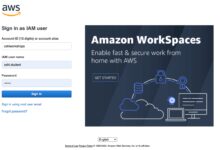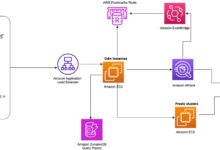AWS Login: 7 Ultimate Tips for Secure & Fast Access
Logging into AWS doesn’t have to be complicated. Whether you’re a developer, admin, or new user, mastering the aws login process is your first step toward seamless cloud control. Let’s break it down—simply, securely, and smartly.
AWS Login: Understanding the Core Concepts

Before diving into the mechanics of aws login, it’s essential to understand what AWS authentication truly means. Amazon Web Services (AWS) is a vast ecosystem of cloud computing tools, and accessing it securely is critical. Every aws login is not just a username and password entry—it’s a gateway to infrastructure, data, and applications that could span the globe.
What Is AWS Login?
The term aws login refers to the process of authenticating a user or system to access AWS services. This authentication can happen in multiple ways: through the AWS Management Console (web interface), AWS CLI (Command Line Interface), SDKs, or APIs. Each method requires proper credentials and permissions.
- The AWS Management Console is the most common entry point for users.
- AWS CLI and SDKs are used by developers and automation tools.
- Authentication is managed through AWS Identity and Access Management (IAM).
Unlike traditional login systems, AWS doesn’t rely on a single global password. Instead, it uses a robust identity management framework that supports multi-factor authentication (MFA), temporary credentials, and role-based access.
Why Secure AWS Login Matters
With great cloud power comes great responsibility. A compromised aws login can lead to data breaches, unauthorized resource usage, or even cryptocurrency mining on your bill. According to a 2023 report by Palo Alto Networks, misconfigured AWS accounts were responsible for 73% of cloud breaches.
“One weak login can compromise an entire cloud environment.” — AWS Security Best Practices Guide
Securing your aws login isn’t optional—it’s mandatory. This includes enforcing MFA, using strong password policies, and limiting root account usage.
Types of AWS Login Methods
There are several ways to perform an aws login, each suited for different use cases. Understanding these options helps you choose the right method for your team, application, or workflow.
AWS Management Console Login
This is the most user-friendly method. Users access the AWS Console via https://aws.amazon.com/console/ and enter their credentials. This method is ideal for administrators and developers who need a visual interface.
- Requires an IAM user or root account.
- Supports MFA for added security.
- Allows access to all AWS services through a web browser.
However, the console isn’t suitable for automation or scripting. That’s where CLI and API access come in.
AWS CLI and SDK Login
For developers and DevOps engineers, the AWS CLI is a powerful tool. But it doesn’t use a traditional aws login with a password. Instead, it relies on access keys (Access Key ID and Secret Access Key) or temporary security tokens.
- Access keys are generated in the IAM console.
- They are configured using
aws configure. - Best practice: Rotate keys every 90 days.
You can also use AWS Single Sign-On (SSO) to manage CLI access across multiple accounts, which we’ll explore later.
Federated and SSO Login
For enterprises, managing hundreds of IAM users isn’t scalable. AWS supports federated login through identity providers like Microsoft Active Directory, Okta, or Google Workspace using Security Assertion Markup Language (SAML) 2.0 or OpenID Connect (OIDC).
- Users log in through their corporate identity.
- No need to manage separate AWS passwords.
- Enables centralized access control and auditing.
This method is especially useful for large organizations that want to integrate AWS with existing identity systems.
Step-by-Step Guide to AWS Console Login
Let’s walk through the actual process of aws login via the AWS Management Console. This is the starting point for most users.
Accessing the AWS Sign-In Page
Navigate to https://aws.amazon.com/console/. You’ll see two login options:
- AWS Management Console: For IAM users.
- Root Account: For the account owner (not recommended for daily use).
Click on “AWS Management Console” if you’re using an IAM user. Enter your AWS account ID or alias, followed by your username and password.
Enabling Multi-Factor Authentication (MFA)
After logging in, the first thing you should do is enable MFA. This adds a second layer of security by requiring a time-based code from an authenticator app (like Google Authenticator or Authy) or a hardware token.
- Go to IAM > Users > Your User > Security Credentials.
- Choose “Assign MFA device”.
- Scan the QR code with your app and enter two consecutive codes.
Once enabled, MFA will be required every time you log in to the console.
Recovering from a Locked Account
What if you’re locked out? AWS locks accounts after multiple failed login attempts. If you’re an IAM user, contact your administrator. If you’re the root user and locked out, AWS Support can help—but only if you’ve set up contact methods in advance.
Pro Tip: Always keep your root account recovery options (email, phone) updated.
Prevention is better than cure: use password managers and MFA to avoid lockouts.
Configuring AWS CLI Login
The AWS CLI is a command-line tool that allows you to interact with AWS services using scripts or direct commands. It’s a favorite among DevOps teams and developers.
Installing and Configuring AWS CLI
First, download and install the AWS CLI from https://aws.amazon.com/cli/. After installation, run:
aws configureYou’ll be prompted to enter:
- Access Key ID
- Secret Access Key
- Default region name (e.g., us-east-1)
- Default output format (json, text, table)
These credentials are stored in ~/.aws/credentials (Linux/Mac) or %UserProfile%.awscredentials (Windows).
Using IAM Roles for CLI Access
Instead of using long-term access keys, AWS recommends using IAM roles. You can assume a role using the sts:AssumeRole API, which returns temporary credentials.
- Define a role with necessary permissions.
- Use
aws sts assume-roleto get temporary tokens. - Set environment variables to use these tokens.
This method enhances security by eliminating the need to store long-term keys.
Managing Multiple AWS Profiles
If you work with multiple AWS accounts (e.g., dev, staging, prod), you can create separate profiles:
aws configure --profile devThis creates a named profile in your config file. To use it:
aws s3 ls --profile dev- Profiles keep credentials organized.
- You can switch between accounts seamlessly.
- Great for CI/CD pipelines with different environments.
Securing Your AWS Login with Best Practices
Security should be the top priority when dealing with aws login. A single compromised credential can lead to massive financial and reputational damage.
Never Use the Root Account for Daily Tasks
The root account has unrestricted access to all AWS resources. AWS strongly advises against using it for everyday tasks.
- Create IAM users with least-privilege permissions.
- Use the root account only for initial setup or billing.
- Enable MFA on the root account immediately.
“The root account is like a master key—keep it locked away.” — AWS Well-Architected Framework
Enforce Strong Password Policies
Go to IAM > Account Settings and enable a password policy that requires:
- Minimum length (14+ characters recommended).
- Uppercase, lowercase, numbers, and symbols.
- Password expiration every 90 days.
- Prevention of password reuse.
This ensures that every aws login starts with a strong foundation.
Rotate Access Keys Regularly
Long-term access keys are a security risk. Rotate them every 90 days or use temporary credentials via IAM roles.
- Monitor key usage with AWS CloudTrail.
- Automate rotation using AWS Lambda.
- Delete unused keys immediately.
Tools like AWS Secrets Manager can help automate this process.
Troubleshooting Common AWS Login Issues
Even with the best setup, you might encounter issues during aws login. Here’s how to fix the most common ones.
Invalid Credentials Error
If you see “Invalid user name or password,” double-check:
- Correct AWS account ID or alias.
- Correct IAM username.
- Keyboard caps lock or input method.
- Whether the user is active (not disabled in IAM).
If using CLI, verify that your access key is active and not expired.
MFA Not Working?
If your MFA device isn’t generating valid codes:
- Check device time synchronization (critical for TOTP).
- Re-sync the device in IAM settings.
- Use a backup MFA method if configured.
You can also assign multiple MFA devices for redundancy.
Access Denied Errors in CLI
This usually means your IAM user lacks permissions. Check:
- Attached IAM policies.
- Correct AWS region.
- Whether you’re using the right profile (
--profile).
Use aws sts get-caller-identity to verify who you are and what account you’re accessing.
Advanced AWS Login: SSO and Identity Federation
For enterprise-scale operations, managing individual IAM users isn’t practical. AWS Single Sign-On (SSO) and federation offer scalable solutions.
What Is AWS SSO?
AWS SSO allows users to log in once and access multiple AWS accounts and business applications. It integrates with AWS Organizations and supports SAML 2.0.
- Centralized user management.
- Supports SCIM for automatic user provisioning.
- Available at https://aws.amazon.com/singlesignon/.
With AWS SSO, you can assign permission sets across multiple accounts, reducing administrative overhead.
Setting Up SAML-Based Federation
To enable SAML federation:
- Create a SAML identity provider in IAM.
- Configure your IdP (e.g., Azure AD, Okta) with AWS as a service provider.
- Map user attributes to IAM roles.
Users then log in through their corporate portal and are redirected to AWS with temporary credentials.
Using OpenID Connect (OIDC) with AWS
OIDC is ideal for web and mobile apps. AWS Cognito supports OIDC for user pools, allowing social logins (Google, Facebook) or custom identity providers.
- Great for customer-facing applications.
- Enables federated identities with minimal code.
- Integrates with Amplify and AppSync.
This method decouples authentication from your backend, improving scalability and security.
Automating and Monitoring AWS Login Activities
Security doesn’t end at login. You must monitor and automate login processes to detect anomalies and reduce manual effort.
Enable AWS CloudTrail for Login Auditing
CloudTrail logs every aws login attempt, successful or failed. Enable it in all regions to get a complete picture.
- Logs include source IP, user agent, and timestamp.
- Integrate with Amazon CloudWatch for alerts.
- Store logs in S3 with encryption and versioning.
Use CloudTrail Insights to detect unusual activity patterns.
Automate Login with AWS Systems Manager
For EC2 instances, you can use AWS Systems Manager Session Manager to log in without SSH keys. This eliminates the need to manage key pairs and improves auditability.
- No open SSH ports required.
- Sessions are logged and encrypted.
- Role-based access control applies.
This is a game-changer for secure remote access.
Using AWS IAM Access Analyzer
Access Analyzer helps identify unintended resource exposures. It can detect if your S3 buckets or other resources are accessible from outside your organization.
- Runs continuously in the background.
- Generates findings with remediation steps.
- Integrates with AWS Organizations.
It’s a proactive tool to prevent breaches before they happen.
How do I reset my AWS password?
If you’re an IAM user, your administrator can reset your password via the IAM console. If you’re the root user, use the “Forgot Password” link on the AWS sign-in page. You’ll need access to the registered email address.
Can I use social login for AWS?
Not directly for the AWS Console, but you can use social identities (Google, Facebook) via AWS Cognito for customer-facing apps. For internal users, consider SSO with corporate identity providers.
Why is my AWS CLI login failing?
Common causes include expired access keys, incorrect region, wrong profile, or insufficient IAM permissions. Run aws sts get-caller-identity to debug. Also, check your ~/.aws/credentials file for accuracy.
What is the difference between IAM user and role?
An IAM user is an entity with long-term credentials (username/password or access keys). A role is an identity with temporary credentials that can be assumed by users, apps, or services. Roles are more secure and recommended for most use cases.
How do I enable MFA for AWS login?
Go to the IAM console, select your user, and under Security Credentials, choose “Assign MFA device.” Follow the prompts to set up a virtual or hardware MFA device. Once enabled, MFA will be required for console access.
Mastering aws login is more than just entering credentials—it’s about understanding security, automation, and best practices. From console access to CLI configuration, from MFA to SSO, every step shapes your cloud security posture. By following the guidelines in this article, you’re not just logging in—you’re logging in safely, efficiently, and professionally. Whether you’re a beginner or a pro, these strategies will keep your AWS environment secure and your workflows smooth.
Further Reading:









